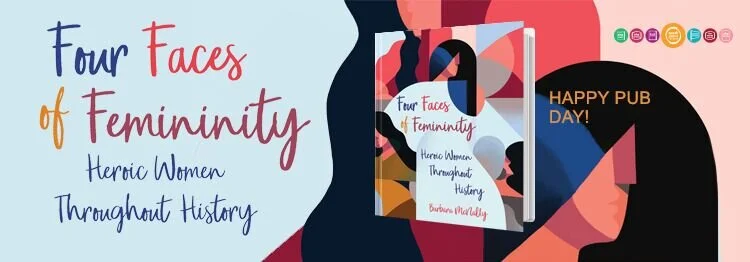The French have long been known as a passionate people and even their kings and queens were often lusty rulers who prioritized pleasure over practicality. France's final queen, Marie Antoinette, was no exception. She was a lover through and through, who enjoyed nothing more than an extravagant party! And it was this very hunger for luxury that became her downfall. She’s famous for many reasons, being strongly opinionated, feminine and bringing fun fashion to France.
From princess to queen
In many ways, Marie was a quintessential princess: Born to royalty, spoiled by her wealthy parents—the rulers of Austria—and schooled more on social graces than academics. Her marriage to Louis-Auguste, heir to the French throne, was arranged when she was just 15 years old, and still very much a wild, flighty teenage girl. In the months leading up to the wedding, the French sent a tutor to straighten her out, but he had no luck, saying that since, “she is rather lazy and extremely frivolous, she is hard to teach.” Ouch!
Once married to Louis, Marie continued to act impetuously. She wrote long, impassioned letters to her mother describing her frustrations and loneliness, and shunned court rituals. The teenaged prince she'd married was her polar opposite: He was an introverted, indecisive boy who loved reading and spending time alone. She was naturally social and vivacious, a true social butterfly who loved partying, gambling, and the most extravagant fashions she could get her hands on.
The married couple lived at Versailles as heirs for four years before Louis was crowned king. Marie was 19 when she became queen of France, and did her best to build the fun-filled, wild, ecstatic life she felt she deserved at court.
Wild child
It's said that as queen, Marie habitually slept until noon and threw parties that lasted all night. She spent money like it was going out of style, sparing no expense on rich food, wine, clothes, wigs, and hats. Balls and parties weren't her only extravagances; She had a tiny model farm built on the palace grounds so that she and her ladies-in-waiting could play dress-up as milkmaids and shepherdesses. Royal hairdresser Léonard Autié became one of her closest friends, and created enormous elaborate hairstyles for her that often towered several feet above her head. Once, he actually styled her hair into a replica of the French warship La Belle Poule!
But despite her efforts, Marie wasn't happy. Her marriage appeared to be a relatively loveless one, and for the first seven years it was childless, too. Furious and hell-bent on her daughter producing an heir to the French throne, Marie's mother sent one of her sons, Emperor Joseph II, to Versailles to intervene. It's not totally clear what all he did, but whatever it was worked! Within a year, Marie bore the first of her four children.
Although Marie's arrival in France had been celebratory and ecstatic, the longer she stayed the less her adopted country felt inclined to adore her. France was saddled with massive military debts, and while the wealthy elite paid no taxes, commoners were taxed within an inch of their lives. News of Queen Marie's expensive antics infuriated the French people, since she was visibly frittering away what little money the country had.
An easy scapegoat
Things got steadily worse over the years, and the French newspapers and people were quick to blame Marie. Her lavish spending earned her the name “Madame Deficit.” The king attempted some tax reforms, but the wealthy French aristocrats resisted … and believing Marie to be entirely to blame, the commoners began calling her “Madame Veto,” too.
Marie still partied hard, but she began to feel the strain of her massive unpopularity. She spent more and more time apart from the king, and soon rumors about an affair with Swedish diplomat Count Axel von Fersen began popping up. (Spoiler: The rumors were true!) Her reputation was already unraveling when a bizarre scandal erupted with her at the center.
A thief dressed as Marie Antoinette stole a massive 647-diamond necklace and took it to London to be sold off in pieces. The real queen had nothing to do with the heist, but the people of France remained convinced that she was somehow involved.
Rebellious to the end, Marie ignored the uproar and continued to spend. She began constructing Hameau de la Reine, an extravagant retreat near her private castle, the Petit Trianon, in Versailles. That's right, she already had a castle and felt she needed a cottage, too.
Revolution!
After years of class discrimination, the French people were fed up. In July of 1789, nearly 1,000 workers and peasants took over the Bastille prison, stripping it of arms and ammunition and marking the beginning of the French Revolution. In October of the same year, an angry mob of women protesting the high cost of bread and other essential household items marched to the palace, dragged the entire royal family back to Paris, and imprisoned them in the Tuileries.
It's important to note here that THE MOST FAMOUS thing about Marie Antoinette is actually a myth. It's said that when she was told that the people had no money to buy bread, she responded by saying, “Then let them eat cake!” Not so. Marie was dismissive and snobbish to be sure, but she never uttered this particular phrase. In fact, it was used many years before Marie's arrival to describe how out-of-touch the wealthy French upper class had become.
But her other outlandish behaviors had sealed her fate. She and Louis escaped Paris for a while, but were recaptured and eventually locked in a tower. They spent the next few years embroiled in political turmoil and accused of a slew of awful crimes including sexual promiscuity and incest. In 1793, Louis was executed. Ten months later, Marie herself was sent to the guillotine and beheaded for treason.
Important but not beloved
French people can hold an epic grudge, and most of them still actively hate Marie Antoinette, even hundreds of years later! Her frivolous behavior and total disregard for the needs of her country made her an arch villain. But Thomas Jefferson wrote, "I have ever believed that if there had been no Queen, there would have been no revolution." So although Marie's focus on fashion and fun became her downfall, she may have been the exact kind of hot mess that France needed to kick-start the machinery of democracy.
And although she was reviled for her opulent tastes, there's no denying that Marie Antoinette was a lover. She loved beauty, she loved excitement, she loved adventure. Her passion and artistry, her unquenchable lust for life were And although she was reviled for her opulent tastes, there's no denying that Marie Antoinette was a lover. She loved beauty, she loved excitement, she loved adventure. Her passion and artistry, her unquenchable lust for life were destructive … but also spectacular to behold.
destructive … but also spectacular to behold.



























